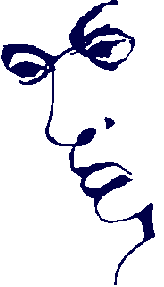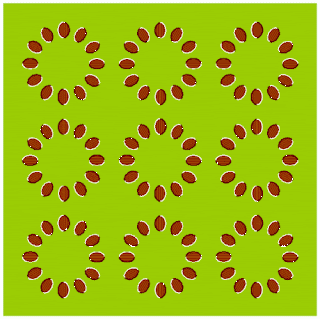History
Eiffel Tower and the Trocadéro fountains | |
The Eiffel {y'-ful} Tower, an immense stucture of exposed latticework supports made of puddle iron, was erected for the Paris Exposition of 1889. The Prince of Wales (later King Edward VII of England) officiated at the ceremonial opening. Of the 700 proposals submitted in a design competition, one was unanimously chosen, a radical creation from the French structural engineer Alexandre Gustave Eiffel (b. Dec. 15, 1832, d. Dec. 28, 1923), who was assisted in the design by engineers Maurice Koechlin and Emile Nouguier, and architect Stephen Sauvestre.
However, the controversial tower elicited some strong reactions, and a petition of 300 names — including those of Guy de Maupassant, Émile Zola, Charles Garnier (architect of the Opéra Garnier), and Alexandre Dumas fils — was presented to the city government, protesting its construction. The petition read, "We, the writers, painters, sculptors, architects and lovers of the beauty of Paris, do protest with all our vigour and all our indignation, in the name of French taste and endangered French art and history, against the useless and monstrous Eiffel Tower."
Nature lovers thought that it would interfere with the flight of birds over Paris. But the Eiffel Tower was admired by Rousseau, Utrillo, Chagall, and Delaunay. It was almost torn down in 1909 at the expiration of its 20-year lease, but was saved because of its antenna — used for telegraphy at that time. Beginning in 1910 it became part of the International Time Service. French radio (since 1918), and French television (since 1957) have also made use of its stature. In the 1960s, it was the subject of a wonderful study by semiologist Roland Barthes.
| Eiffel Tower April 1888 July 1888 December 1888 completed May 1889 | |||||
Built to celebrate the science and engineering achievements of its age, soaring 300m / 984 ft. (320.75m / 1,052 ft. including antenna) and weighing 7000 tons, the structure consists of two visibly distinct parts: a base composed of a platform resting on four separate supports (called pylons or bents) and, above this, a slender tower created as the bents taper upward, rising above a second platform to merge in a unified column.
This unprecedented work, the tallest structure in the world until the Empire State Building was built about 40 years later, had several antecedents. Among them were the iron-supported railway viaducts designed by Eiffel, an arch bridge over the Douro River in Portugal with a span of 160 m (525 ft), and a design for a circular, iron-frame tower proposed by the American engineers Clarke and Reeves for the Centennial Exposition of 1876. Eiffel knew and publicly acknowledged this influence; he was no stranger to the United States, having designed the wrought-iron pylon inside Frederic Bartholdi's Statue of Liberty in 1885. Later in the same year, he had also begun work on the cupola of the Nice observatory.
Eiffel was the leading European authority on the aerodynamics of high frames (he wrote "The Resistance of the Air" in 1913). In the construction of the Eiffel Tower, the curve of the base pylons was precisely calculated so that the bending and shearing forces of the wind were progressively transformed into forces of compression, which the bents could withstand more effectively. Such was Eiffel's engineering wizardry that even in the strongest winds his tower never sways more than 4-1/2 inches. The superskyscrapers erected since 1960, such as the World Trade Center, were constructed in much the same way.
However difficult its birth may have been, the Tour Eiffel is now completely accepted by French citizens, and is internationally recognized as one of the symbols of Paris itself.
Facilities and Views
In the basements of the eastern and western pillars, one can visit the gargantuan 1899 machinery which powers the elevators, an astonishing spectacle reminiscent of a Jules Verne novel. From the Tower's three platforms — especially the topmost — the view of Paris is superb. It is generally agreed that one hour before sunset, the panorama is at its best; don't forget to bring your camera, and experiment with the f-stop settings to capture a dazzling sunset on the Seine. If you can't be there in person, then check out a Live Aerial View of Paris with TF1's webcam online: from the top of the Eiffel Tower, you can see Paris in real time, 24 hours a day, whatever the weather conditions in the French capital. To get the most out of this view of Paris, we suggest you surf their web site between 7:00 AM and 9:00 PM GMT (1:00 AM and 3:00 PM Eastern Time in the U.S.), when the City of Light is at its best.
| Eiffel Tower by Susan Gillette 14" x 18" fine art print BUY THIS PRINT | |
First level: 57.63 meters (189 feet). Observatory from which to study the movements of the Eiffel Tower's summit. Kiosk presentation about the mythic painting of the Eiffel Tower. Space CINEIFFEL: offers an exceptional panorama of sights from the Tower. Souvenir shops (yes, every tourist MUST have a miniature replica). Restaurant "Altitude 95" (phone 01-45-55-20-04). Post office, with special stamps "Paris Eiffel Tower ". Panoramic gallery displaying the Monuments of Paris.
Second level: 115.73 meters (379 feet, 8 inches). Panorama of Paris. Telescopes, shops. Animated displays on the operation of the elevators. Jules Verne Restaurant (extremely expensive, reservations absolutely necessary; phone 01-45-55-61-44).
Third level: 276.13 meters (905 feet, 11 inches). Exceptional panoramic views, day or night, of Paris and its surroundings. Recently restored office, featuring wax reproductions of Gustave Eiffel and Thomas Edison in conversation (see photo. Panoramic guide displays to aid orientation. Dioramas presenting the history of this platform.
Probably the best approach to the tower is to take the Métro to the Trocadéro station and walk from the Palais de Chaillot to the Seine. Besides fabulous views, especially when the Trocadéro fountains are in full force, you get a free show from the dancers and acrobats who perform around the Palais de Chaillot. The vast green esplanade beneath the tower is the Parc du Champs-de-Mars, which extends all the way to the 18th-century École Militaire (Military Academy), at its southeast end. This formal lawn was once a parade ground for French troops.
The Eiffel Tower at night is one of the great sights of Paris and shouldn't be missed. The gold lighting highlights the delicacy of the steelwork in a way that is missed in daylight. Skip the tour buses and pickpockets on Trocadéro and head up to the École Militaire for a more tranquil view.
Interesting Facts
|
|
|
| Eiffel Tower (photographer unknown) 24" x 36" fine art print © NAGR - Eurographics BUY THIS PRINT | |
During its lifetime, the Eiffel Tower has witnessed a few strange scenes, including being scaled by a mountaineer in 1954, and two Englishmen parachuting off it in 1984. In 1923, the journalist Pierre Labric (who was later to become mayor of Montmartre) rode a bicycle down from the first level; some accounts say he rode down the stairs, others suggest the exterior of one of the tower's four legs which slope outward.
Politics have also played a role in its life. During World War II, the Germans hung a sign on it that read: "Deutschland Siegt Auf Allen Fronten" ("Germany is victorious on all fronts"). In 1958, a few months before Fidel Castro's rise to power, Cuban revolutionaries hung their red-and-black flag from the first level, and, in 1979, an American from Greenpeace hung one that read: "Save the Seals". In 1989, the Tower celebrated its centennial with music and fireworks (the show lasted 89 minutes).
Operation
The Eiffel Tower is owned by the City of Paris, which has subcontracted its maintenance and daily operations since 2005 to SETE (Société d'Exploitation de la Tour Eiffel), a public utility.
More than 500 people bring the Eiffel Tower to life each day. About one half are employed by SETE, the others are concessionaires (souvenir boutiques, restaurants, telescope operations, ATMs, behind-the-scene tours) and civil service employees (police, fire personnel, post office, weather).































































